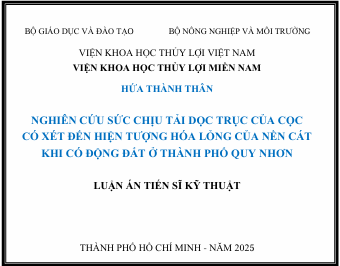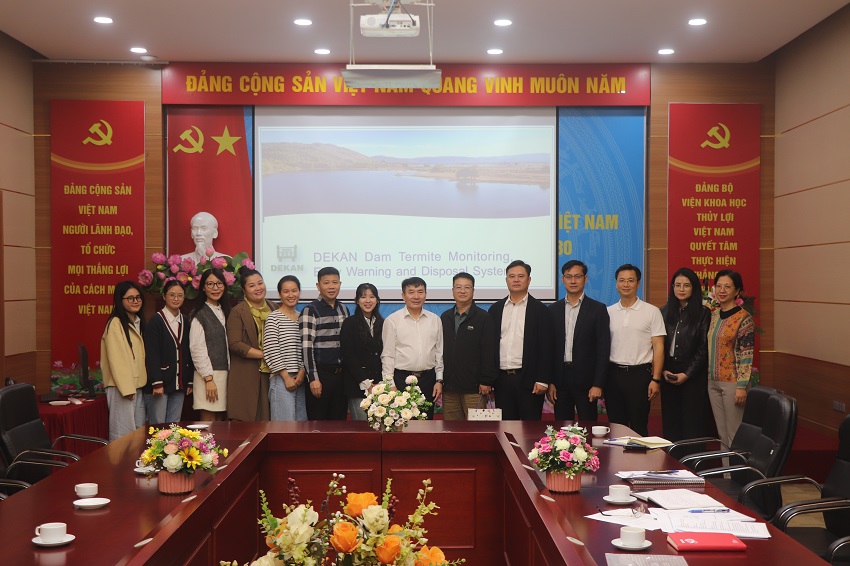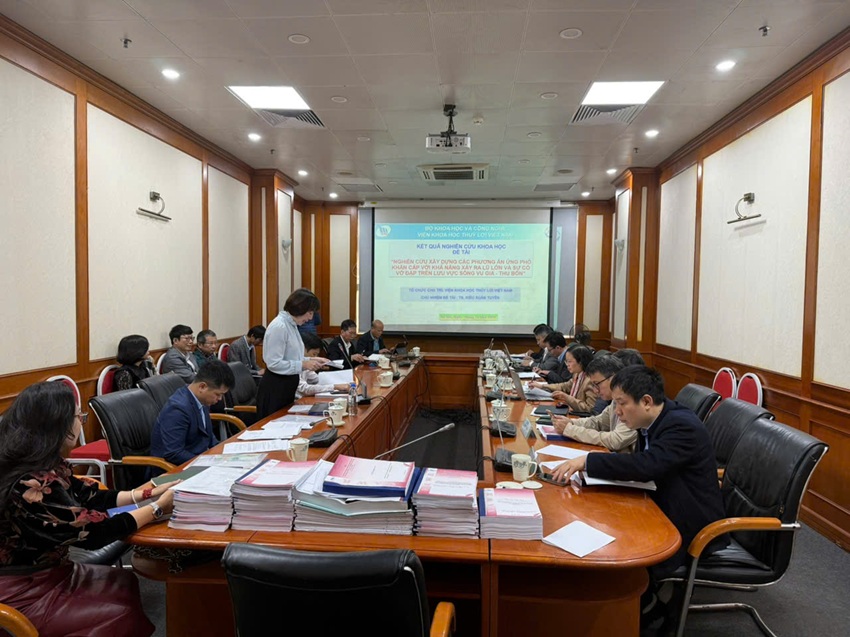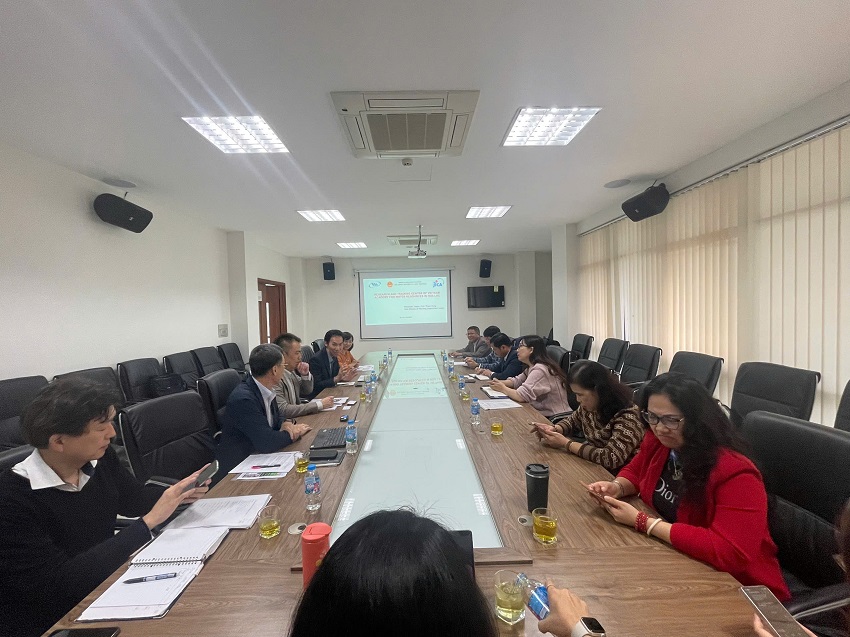Trích yếu luận án Tiến sỹ kỹ thuật (NCS. Nguyễn Minh Việt)
31/08/20171. Tên tác giả: Nguyễn Minh Việt. 2. Tên luận án: Nghiên cứu giải pháp giảm ứng suất nhiệt của bê tông đầm lăn trong xây dựng công trình thủy lợi thủy điện tại Việt Nam. 3. Chuyên ngành: Kỹ thuật xây dựng công trình thủy; Mã số: 62. 58 . 02. 02
4. Người hướng dẫn: GV hướng dẫn 1 : PGS.TS. Hoàng Phó Uyên
GV hướng dẫn 2 : GS.TS. Phạm Ngọc Khánh
5. Tên cơ sở đào tạo: Viện Khoa học Thủy lợi Việt Nam
6. Mục tiêu và đối tượng nghiên cứu
6.1. Mục tiêu nghiên cứu
Xác định quá trình phát triển nhiệt độ, trường ứng suất nhiệt trong đập bê tông đầm lăn (BTĐL ) dựa trên những điều kiện ban đầu và điều kiện biên.
Đề xuất việc lựa chọn hàm lượng và thành phần vật liệu , chất kết dính (CKD), đề xuất các giải pháp giảm nhiệt đểkhống chế các vết nứt do ứng suất nhiệt trong quá trình thi công, vận hành đập BTĐL phù hợp với từng vùng miền của Việt Nam.
6.2. Đối tượng nghiên cứu
Đập BTĐL đã và đang xây dựng tại Việt Nam.
7. Các phương pháp nghiên cứu đã sử dụng
Phương pháp tổng hợp, phân tích và kế thừa các nghiên cứu đã có
Phương pháp nghiên cứu lý thuyết
Phương pháp thí nghiệm trong phòng
Phương pháp mô hình toán
8.Ý nghĩa khoa học và thực tiễn
Làm rõ những yếu tố ảnh hưởng trực tiếp đến quá trình phát triển nhiệt và gây ra ứng suất nhiệt trong quá trình thi công BTĐL.
Khẳng định lợi ích của việc sử dụng phụ gia khoáng (PGK) là một trong những biện pháp giảm nhiệt độ sinh ra trong thi công BTĐL, đẩy nhanh tốc độ thi công đập BTĐL.
9. Đóng góp mới của luận án
Đã đề xuất hiệu chỉnh công thức tính toán nhiệt thủy hóa của BTĐL phù hợp với đặc điểm một số loại xi măng của Việt Nam.
Đã xây dựng được mô đun chuyên dụng tích hợp với phần mềm ANSYS phân tích trường nhiệt và ứng suất nhiệt của đập BTĐL.
Đã sử dụng mô đun trên để khảo sát một số yếu tố ảnh hưởng gồm: nhiệt độ của môi trường, độ ẩm của không khí, hàm lượng khoáng C3A + C3S của XM, nhiệt độ đổ của bê tông, hàm lượng PGK đến trường ứng suất nhiệt trong đập BTĐL phù hợp với điều kiện ba vùng đặc trưng gồm: miền núi phía Bắc, Bắc Trung bộ, Nam Trung bộ và Tây Nguyên.
CONTENT OF THE THESIS ABSTRACT
1. Name of PhD candidate: Nguyen Minh Viet
2. Title of thesis: A solution study of thermal stress reduction of roller compacted concrete in hydropower and irrigation constructions of Vietnam
3. Major: Hydraulic Engineering; Code No: 62. 58 . 02. 02
4. Supervisors: Supervisor 1 :Assoc.Prof.Dr. Hoang Pho Uyen
Supervisor 2:Prof.Dr. Pham Ngoc Khanh
5. Name of Training center: VietNam Academy For Water Resources
6. Purpose and subjects
6.1. Purpose of the thesis
The objective of the study aims at the determination of the procedure of temperature development and thermal stress field in RCC dams based on initial and boundary conditions.
It also recommends for the selection of content and constituents of binders and suggests solutions to heat reduction in order to minimize the occurrence of cracks occasioned by thermal stress in RCC dam construction with a consideration of appropriateness for each locality and region of Vietnam.
6.2. Research subjects
RCC dams that have been and are being built in Vietnam.
7. The used research methods
Method of integrating, analyzing and inheriting previous studies
Method of theoretical research
Method of indoor experiment
Method of mathematic model
8. Scientific and practical significance
The study clarifies factors that exert direct effects on temperature development and occasion thermal stress during the RCC dam construction.
Additionally, it confirms the benefits of mineral admixture use as one of the solutions to the reduction of heat which is generated during RCC construction and acceleration of RCC dam construction pace.
9. New contribution of the thesis
It proposed a correction for the formula calculating heat of hydration of RCC making it suitable with the features of Vietnamese cement.
It established a specialized modulus which is integrated into the ANASYS software that analyzes temperature and thermal stress fields of RCC dams.
It utilized the aforementioned modulus to survey a number of affecting factors including ambient temperature, air humidity, C3A + C3S content in cement, concrete pouring temperature, content of mineral admixture, thermal stress field, all of which correspond to the conditions of three typical regions of Vietnam, namely, Northern mountain area, North Central Coast, South Central Coast and Central Highlands.
1. Luận án Tiến sỹ kỹ thuật NCS. Nguyễn Minh Việt
2. Tóm tắt luận án Tiến sỹ NCS. Nguyễn Minh Việt (VIE)
3. Tóm tắt luận án Tiến sỹ NCS. Nguyễn Minh Việt (ENG)
Ý kiến góp ý:











